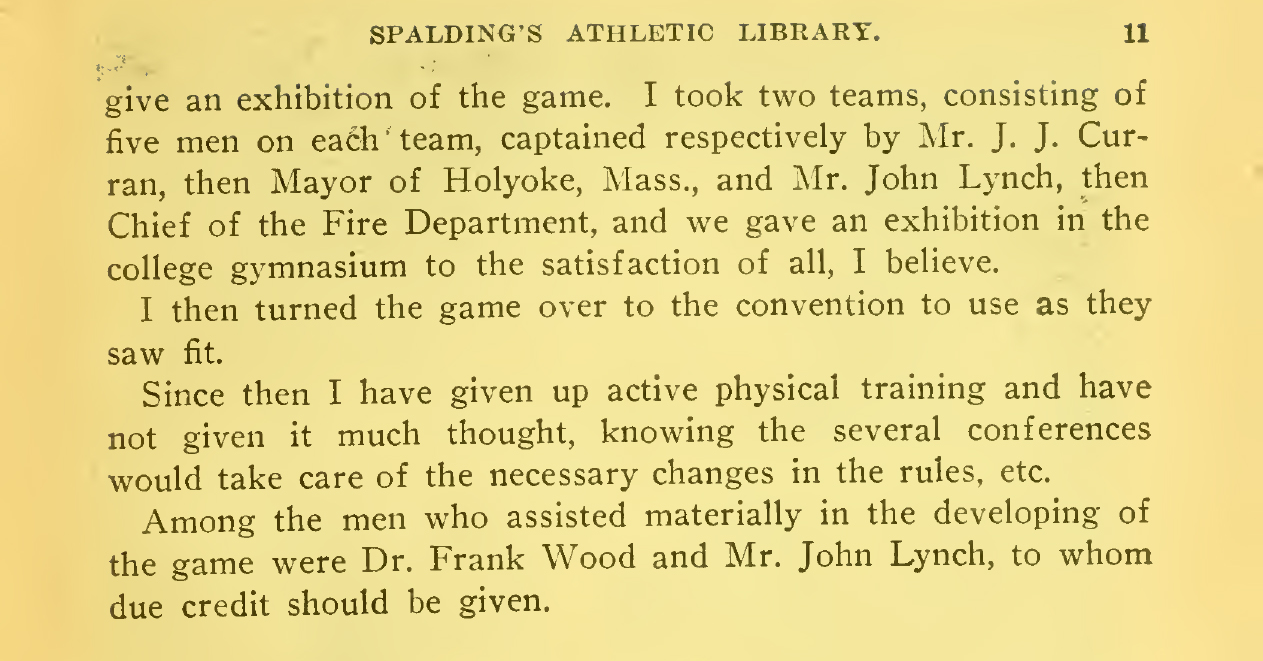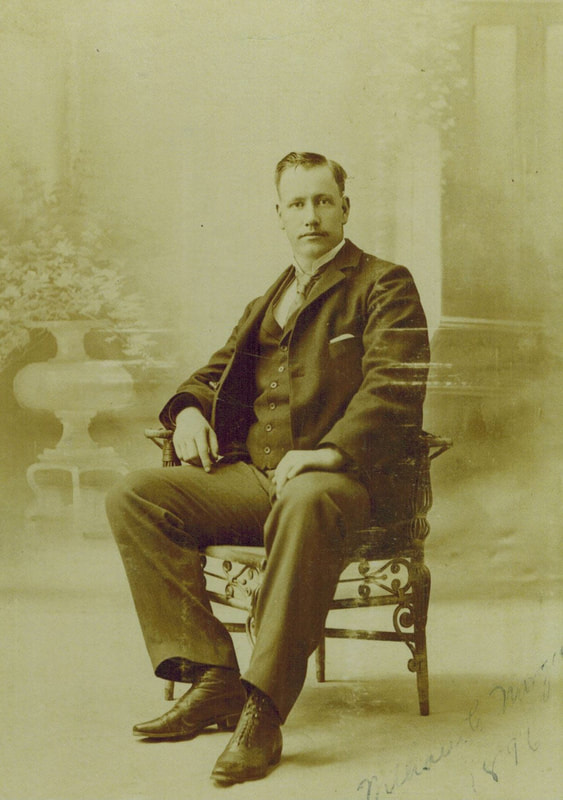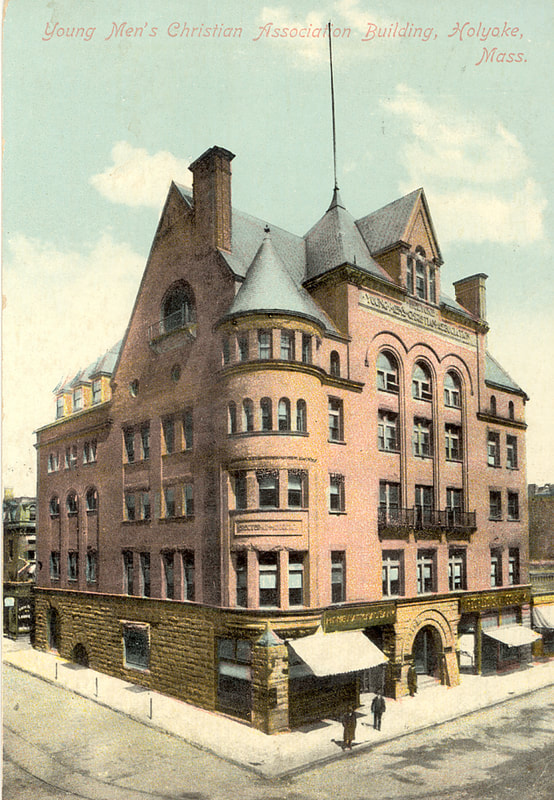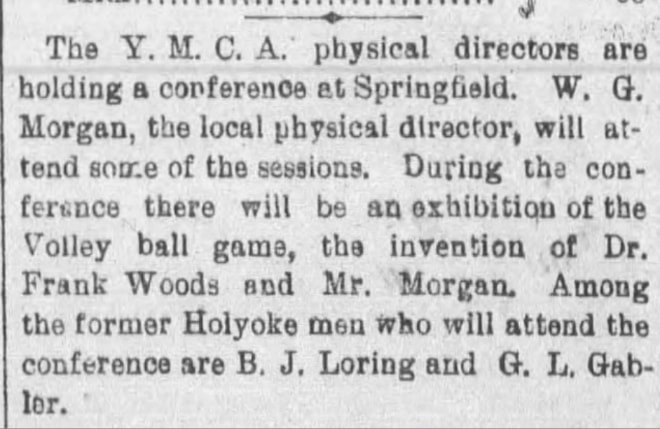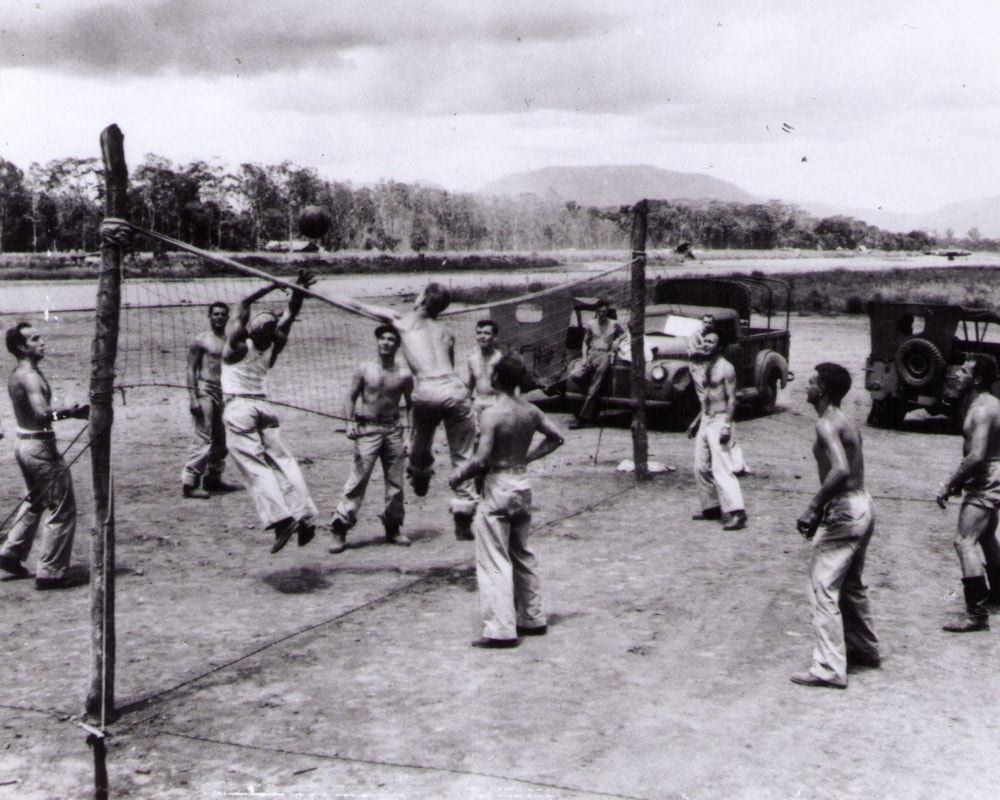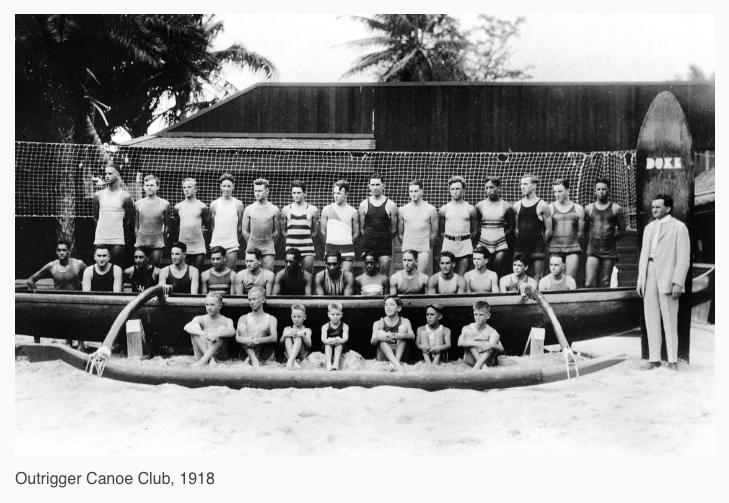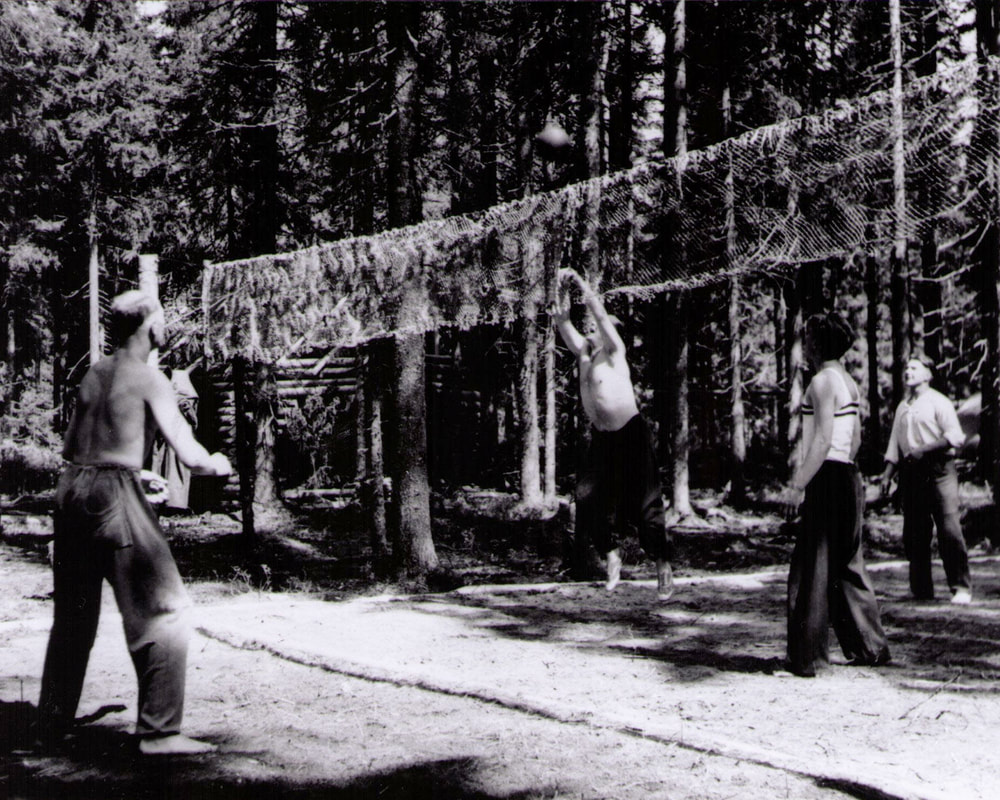Revisiting Volleyball’s Origins and Overlooked Contributors
In the realm of sports history, few narratives have been as widely accepted and celebrated without citation as the invention of volleyball on February 9, 1895, attributed to William George Morgan.
However, recent scrutiny and investigative efforts have revealed discrepancies that challenge this long standing belief. This article endeavors to reassess the historical accuracy surrounding volleyball's origins, shedding light on the February 9th date and the overlooked contributions of Dr. Frank Woods and Holyoke Fire Chief John Lynch to the sport's early development.
The International Volleyball Hall of Fame (IVHF) has undertaken a meticulous investigation to discern the truth behind volleyball's origins. Through exhaustive archival searches encompassing newspaper articles, institutional collections, and correspondence, the IVHF has spearheaded efforts to reconcile discrepancies in the historical record leading to significant revelations regarding the timeline of volleyball's inception.
Records indicate William Morgan’s tenure at the Auburn, Maine YMCA lasted through August of 1895. Additionally, Morgan did not start his new position as Physical Director of the Holyoke YMCA until August 30, 1895. Morgan’s own recounting of volleyball's creation consistently indicates the year of 1895. We can infer, then, that it was likely December of 1895 that the sport of volleyball (Mintonette) started taking shape as it is generally referenced as it was created in the winter.
In the realm of sports history, few narratives have been as widely accepted and celebrated without citation as the invention of volleyball on February 9, 1895, attributed to William George Morgan.
However, recent scrutiny and investigative efforts have revealed discrepancies that challenge this long standing belief. This article endeavors to reassess the historical accuracy surrounding volleyball's origins, shedding light on the February 9th date and the overlooked contributions of Dr. Frank Woods and Holyoke Fire Chief John Lynch to the sport's early development.
The International Volleyball Hall of Fame (IVHF) has undertaken a meticulous investigation to discern the truth behind volleyball's origins. Through exhaustive archival searches encompassing newspaper articles, institutional collections, and correspondence, the IVHF has spearheaded efforts to reconcile discrepancies in the historical record leading to significant revelations regarding the timeline of volleyball's inception.
Records indicate William Morgan’s tenure at the Auburn, Maine YMCA lasted through August of 1895. Additionally, Morgan did not start his new position as Physical Director of the Holyoke YMCA until August 30, 1895. Morgan’s own recounting of volleyball's creation consistently indicates the year of 1895. We can infer, then, that it was likely December of 1895 that the sport of volleyball (Mintonette) started taking shape as it is generally referenced as it was created in the winter.
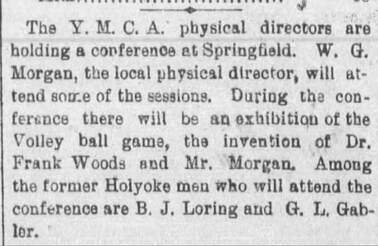 Dr. Frank Woods noted as one of the founders of Volleyball - Holyoke Daily Transcript (July 7, 1896)
Dr. Frank Woods noted as one of the founders of Volleyball - Holyoke Daily Transcript (July 7, 1896)
The emergence of this February fiasco challenges the reliability of historical accounts that have long held February 9, 1895, as volleyball's founding date. It underscores the fallibility of sources such as Wikipedia, whose entry on volleyball introduced the iconic date without verifiable citation. This serves as a cautionary tale regarding the importance of rigorous research and scholarly scrutiny in shaping historical narratives.
In the course of its research, the IVHF has brought attention to the overlooked contributions of Dr. Frank Woods and Holyoke Fire Chief John Lynch to volleyball's creation. Despite William Morgan's prominent role as the face of volleyball's invention, Woods and Lynch played pivotal roles that have been marginalized in historical narratives. Their inclusion serves to enrich our understanding of the collaborative efforts that shaped the early development of the sport.
The reevaluation of volleyball's historical narrative holds broader implications for our understanding of sporting history and the construction of historical memory. By interrogating established narratives and acknowledging the contributions of overlooked figures, the IVHF seeks to foster a more nuanced appreciation of volleyball's origins.
In the course of its research, the IVHF has brought attention to the overlooked contributions of Dr. Frank Woods and Holyoke Fire Chief John Lynch to volleyball's creation. Despite William Morgan's prominent role as the face of volleyball's invention, Woods and Lynch played pivotal roles that have been marginalized in historical narratives. Their inclusion serves to enrich our understanding of the collaborative efforts that shaped the early development of the sport.
The reevaluation of volleyball's historical narrative holds broader implications for our understanding of sporting history and the construction of historical memory. By interrogating established narratives and acknowledging the contributions of overlooked figures, the IVHF seeks to foster a more nuanced appreciation of volleyball's origins.
Excerpt from Page 11 of the 1916-17 Spalding Athletic Library Volley Ball Guidebook. This article entitled "How Volley Ball was Originated" was written by William Morgan himself. In the final sentence he notes credit should be given to Dr. Frank Woods and Holyoke Fire Chief John Lynch for their material contributions to developing the game.
Courtesy of the IVHF Archive
Courtesy of the IVHF Archive
|
William G. Morgan Portrait circa 1896
Courtesy of Springfield College, Archives and Special Collections |
The Inventor of Volleyball - William G. Morgan
Born in 1870 at Lockport, New York, William G. Morgan spent his childhood years attending public school and working at his father's boat yard on the banks of the Old Erie Canal. In 1891 Morgan entered Mt. Hermon Preparatory School in Northfield, Massachusetts, and it was there he developed a friendship with James A. Naismith, who was destined to be the originator of basketball. Naismith was impressed with young Morgan's athletic skills and encouraged Morgan to continue his education at the International Young Men's Christian Association Training School in Springfield, Massachusetts (now called Springfield College). While at Springfield, Morgan participated on the college's famous football team which played championship ball under the leadership of Alonzo A. Stagg, one of the "Grand Old Men of Football". In 1894, after graduation, Morgan accepted the position of physical director of the Auburn, Maine YMCA. The following year he accepted a similar post in Holyoke, Mass., and it was here the story of Volleyball began. |
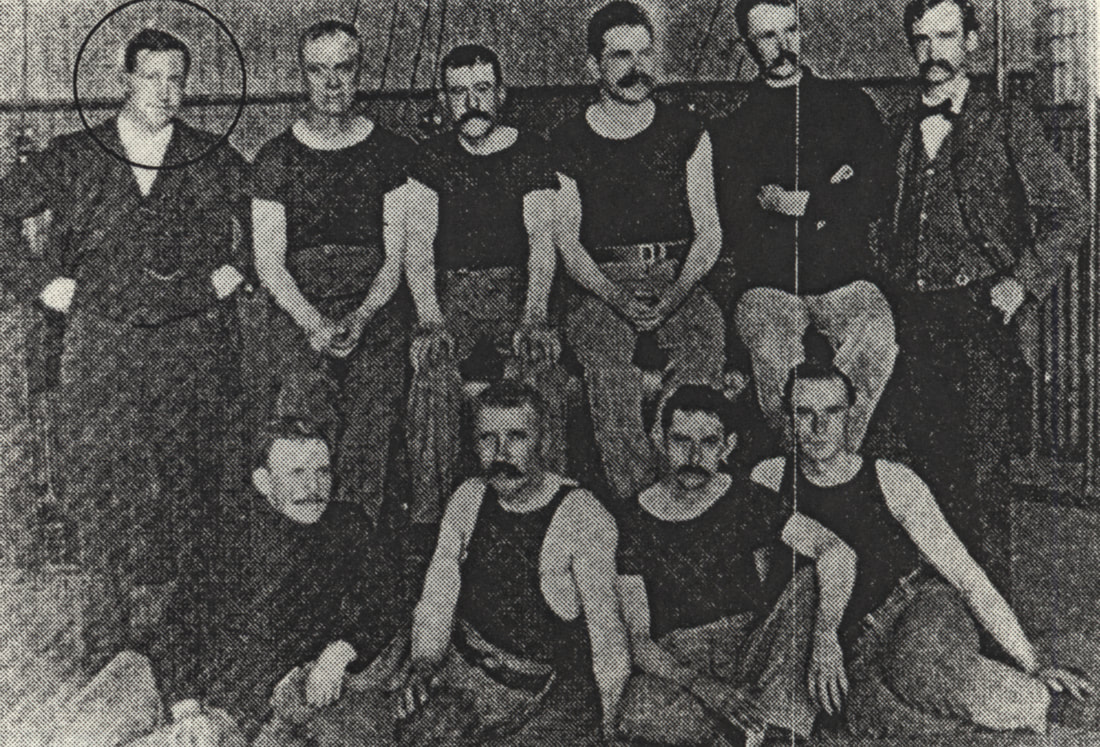
William G. Morgan (Top left) with members of the first volleyball team. Holyoke Mayor James J. Curran pictured fourth from left.
Courtesy of the IVHF Archive
The game of volleyball was quite a bit different from what we're used to. It was played on a smaller 25'x50' court, with an unlimited number of players hitting the ball an unlimited number of times, on either side of a 6'6" high net. Things tended to get a little crowded.
Each game was broken up into nine innings, each inning made of up three outs, or "serves". These serves could be helped over the net by a second player, if the server didn't quite reach the net.
The basketball originally used proved to be a little too heavy, and the subsequent use of a basketball bladder, too soft. Morgan remedied this by contacting A.G. Spalding, a local sporting goods manufacturer who designed a special ball - a rubber bladder, encased in leather, 25" or so in circumference. The "volleyball".
Though still in its infancy, the sport was slowly developing and with the YCMA taking the reigns, Morgan was confident volleyball would continue to entertain and relax the boys down at the "Y".
What he probably didn't realize was that he had just created what would become the second most popular team sport in the world.
Each game was broken up into nine innings, each inning made of up three outs, or "serves". These serves could be helped over the net by a second player, if the server didn't quite reach the net.
The basketball originally used proved to be a little too heavy, and the subsequent use of a basketball bladder, too soft. Morgan remedied this by contacting A.G. Spalding, a local sporting goods manufacturer who designed a special ball - a rubber bladder, encased in leather, 25" or so in circumference. The "volleyball".
Though still in its infancy, the sport was slowly developing and with the YCMA taking the reigns, Morgan was confident volleyball would continue to entertain and relax the boys down at the "Y".
What he probably didn't realize was that he had just created what would become the second most popular team sport in the world.
|
Courtesy of the IVHF Archive - Edward DeGroot Collection
Courtesy of the IVHF Archive - Edward DeGroot Collection
|
Worldwide Growth
The physical education directors of the YMCA, encouraged particularly by two professional schools of physical education, Springfield college in Massachusetts and George Williams College in Chicago (now at Downers Grove, Illinois), adopted volleyball in all its societies throughout the United States, Canada (in 1900 Canada became the first foreign country to adopt the game), and also in many other countries: Elwood S. Brown in the Philippines (1910), J. Howard Crocker in China, Franklin H. Brown in Japan (1908), Dr. J.H. Gray in Burma, in China and in India, and others in Mexico and South American, European and African countries. By 1913 the development of volleyball on the Asian continent was assured as, in that year, the game was included in the programme of the first Far-Eastern Games, organized in Manila. It should be noted that, for a long time, Volleyball was played in Asia according to the "Brown" rules which, among other things, used 16 players (to enable a greater participation in matches). An indication of the growth of volleyball in the United States is given in an article published in 1916 in the Spalding Volleyball Guide and written by Robert C. Cubbon. In that article Cubbon estimated that the number of players had reached a total of 200,000 people subdivided in the following way: in the YMCA (boys, young men, and older men) 70,000, in the YWCA (girls and women) 50,000, in schools (boys and girls) 25,000 and in colleges (young men) 10,000. In 1916, the YMCA managed to induce the powerful National Collegiate Athletic Association (NCAA) to publish its rules and a series of articles, contributing to the rapid growth of volleyball among young college students. In 1918 the number of players per team was limited to six, and in 1922 the maximum number of authorized contacts with the ball was fixed at three. Until the early 1930s volleyball was for the most part a game of leisure and recreation, and there were only a few international activities and competitions. There were different rules of the game in the various parts of the world; however, national championships were played in many countries (for instance, in Eastern Europe where the level of play had reached a remarkable standard). Volleyball thus became more and more a competitive sport with high physical and technical performance. |
The FIVB
It has seen the start of two centuries and the dawn of a new millennium. Volleyball is now one of the big five international sports, and the FIVB, with its 220 affiliated national federations, is the largest international sporting federation in the world.
Volleyball has witnessed unprecedented growth over the last decade. With the great success of world competitions such as the FIVB Volleyball Nations League, World Championships, the FIVB World Grand Prix, the FIVB World Cup, and the FIVB Grand Champions Cup as well as the Olympic Games, the level of participation at all levels internationally continues to grow exponentially.
The beach volleyball phenomenon also continues to amaze. The overwhelming spectator and television success of Beach Volleyball since its introduction to the Olympic Games at Atlanta 1996 and the stunning success of the FIVB World Tour and World Championships has opened up volleyball to a completely new market.
It has seen the start of two centuries and the dawn of a new millennium. Volleyball is now one of the big five international sports, and the FIVB, with its 220 affiliated national federations, is the largest international sporting federation in the world.
Volleyball has witnessed unprecedented growth over the last decade. With the great success of world competitions such as the FIVB Volleyball Nations League, World Championships, the FIVB World Grand Prix, the FIVB World Cup, and the FIVB Grand Champions Cup as well as the Olympic Games, the level of participation at all levels internationally continues to grow exponentially.
The beach volleyball phenomenon also continues to amaze. The overwhelming spectator and television success of Beach Volleyball since its introduction to the Olympic Games at Atlanta 1996 and the stunning success of the FIVB World Tour and World Championships has opened up volleyball to a completely new market.
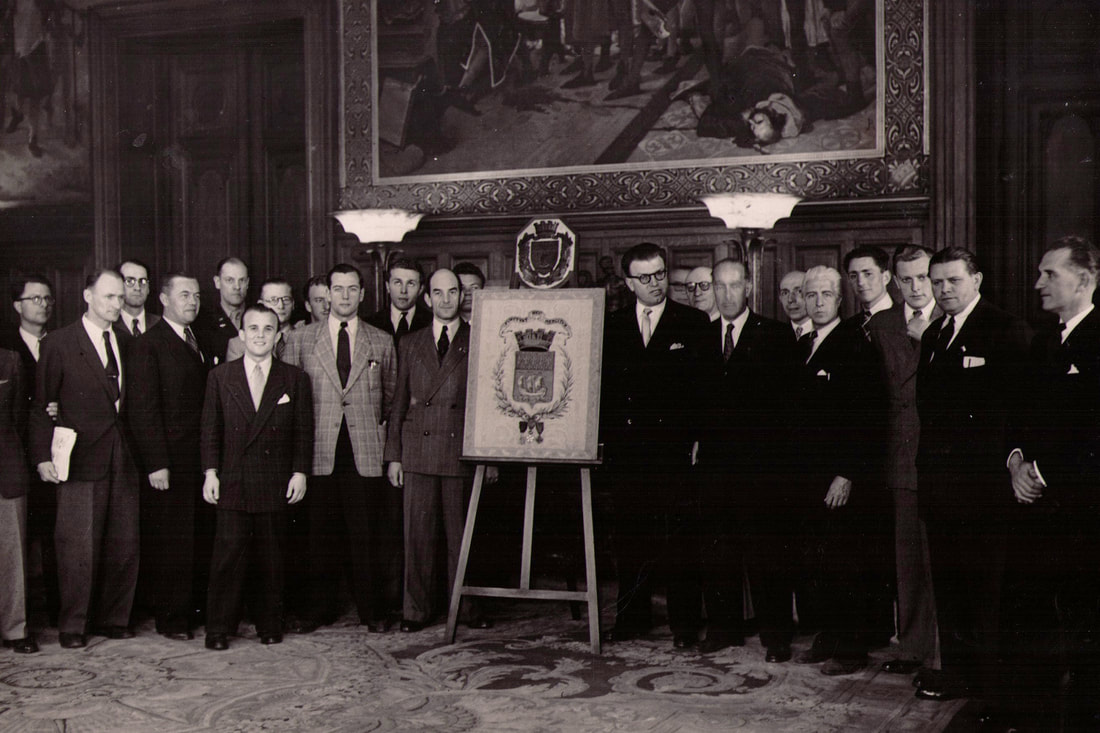
Photo from the 1st FIVB World Congress in Paris, France that formed the organization in April of 1947
Courtesy of the IVHF Archive - Edward DeGroot Collection
Courtesy of the IVHF Archive - Edward DeGroot Collection



